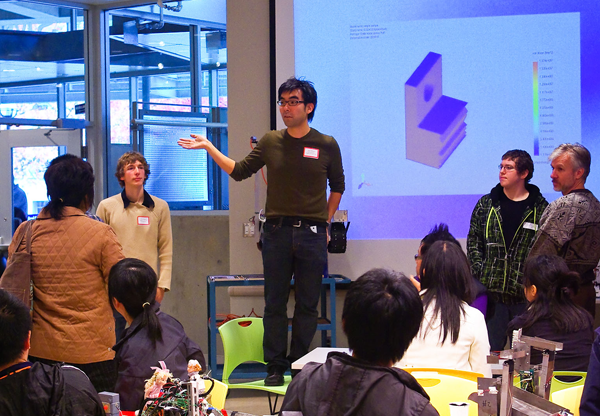Building Your Prototype
Prototyping has long been associated with certain fields, such as engineering, medical devices, soft and hardware development. Entrepreneurs of all stripes, however, have come to see how useful prototyping can be in the early stages of venture building. Among other outcomes, good prototypes have helped them discover what not to do before they have spent boxes of cash on products or services that won’t work or don’t appeal to customers.
At UBC, we are lucky to have access to Dr. Jon Nakane and Bernhard Zender at the UBC Engineering Physics Project Lab. In their own classes, you will find students building high tech marvels and robots. Jon and Bernhard also work with e101 students and others across the campus to help them realize their ideas and streamline their prototypes.
Jon defines prototyping as: ‘anything which can be used to gather information about how well or poorly a proposed final solution might work for the intended user.’ ‘A good prototype,’ Jon continues, ‘allows you to gather the most information in the shortest amount of time using the fewest possible resources.’
1. Think about how you could use prototyping to gather information about your proposed venture. Product or service – what specific elements of your idea will you be testing and how will a prototype help you do so?
2. As you’ll see in the site, prototypes can be software, hardware or made from the most basic of materials – wood, paper, cut plastic. In what form will your prototype be? Which of the tools identified in the site could help you create it?
3. ** Create a simple prototype for the product or service you are thinking of for your venture. This could be something physical, a sample landing page, a flow chart of your services. This could be a simple picture of what you are planning to make or design.**
As you brainstorm, you can check out these prototyping links from the d school at Stanford.


